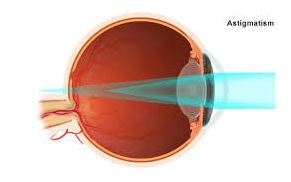- Phone : +770-996-0700
- Email : info@atlantaeyeconsultants.com
- Opening Hours : 08:00AM to 21:00PM
Refractive Errors
Home > Blog

Refractive errors occur when the curve of the cornea is irregularly shaped (too steep or too flat). When the cornea is of normal shape and curvature, it bends, or refracts, light on the retina with precision. However, when the curve of the cornea is irregularly shaped, the cornea bends light imperfectly on the retina. This affects good vision. The refractive process is similar to the way a camera takes a picture. The cornea and lens in your eye act as the camera lens. The retina is similar to the film. If the image is not focused properly, the film (or retina) receives a blurry image. The image that your retina “sees” then goes to your brain, which tells you what the image is.
When the cornea is curved too much, or if the eye is too long, faraway objects will appear blurry because they are focused in front of the retina. This is called myopia, or nearsightedness. Myopia affects over 25 percent of all adult Americans.
Hyperopia, or farsightedness, is the opposite of myopia. Distant objects are clear, and close-up objects appear blurry. With hyperopia, images focus on a point beyond the retina. Hyperopia results from an eye that is too short.
Astigmatism is a condition in which the uneven curvature of the cornea blurs and distorts both distant and near objects. A normal cornea is round, with even curves from side to side and top to bottom. With astigmatism, the cornea is shaped more like the back of a spoon, curved more in one direction than in another. This causes light rays to have more than one focal point and focus on two separate areas of the retina, distorting the visual image. Two-thirds of Americans with myopia also have astigmatism.
Refractive errors are usually corrected by eyeglasses or contact lenses. This procedure is called a refraction. Although these are safe and effective methods for treating refractive errors, refractive surgeries are becoming an increasingly popular option.
Latest Blog & News letter
download & read
Discover eye care excellence. Download our brochure for detailed insights.
